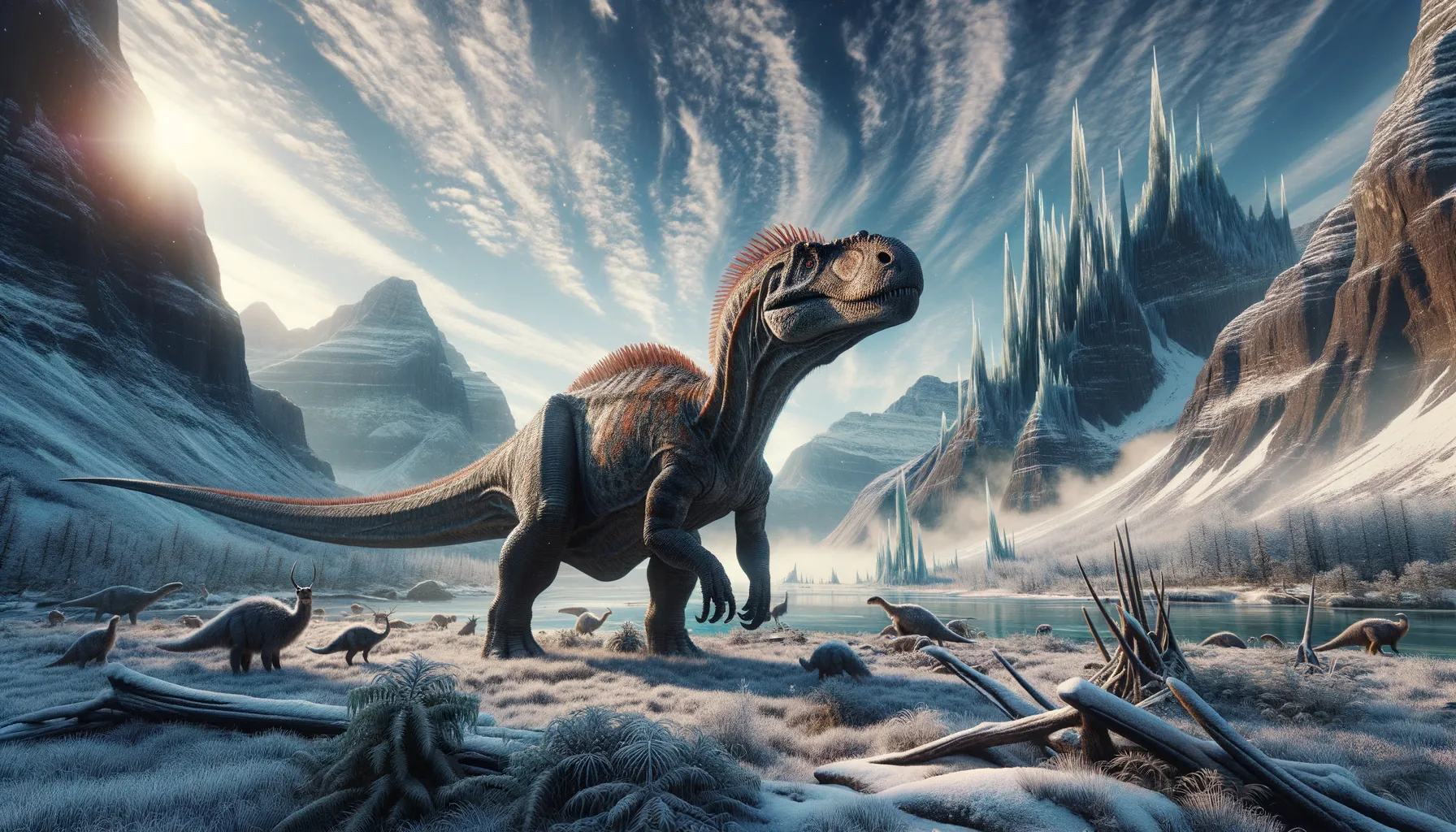
Arctosaurus
Cold survivor of the ancient Arctic lands.
Period
Triassic
Length
Roughly 3 meters in length.
Height
Approximately 1.5 meters tall.
Weight
Estimated at about 150 kilograms.
Arctosaurus was a prehistoric reptilian dinosaur that lived during the Triassic period. It roamed the regions that are now part of the Canadian Arctic. Its discovery provides crucial insights into the migratory patterns and adaptation strategies of early saurian reptiles. Despite the harsh, cold environment, Arctosaurus thrived and coexisted with a variety of other ancient species, signifying its highly specialized survival skills.
Diet
Arctosaurus was primarily a carnivore. It fed on small prey, including ancient amphibians and small reptiles that inhabited the same region. Its diet played a significant role in the ecological dynamics of its environment.
Hunting
Its hunting strategy likely involved ambush tactics, using its environment to conceal itself from prey. Although not the fastest predator, its patience and strategic approach to capturing food made it a successful hunter.
Environmental challenges
Living in a harsh and cold environment posed significant survival challenges for Arctosaurus. The extreme weather conditions, scarce food resources during colder periods, and competition from other predators were significant obstacles. Adaptation to these challenges was crucial for its continued existence, leading to unique evolutionary traits.
Speed
Likely slow-moving due to its size and build.
Lifespan
Estimated to be around 30 to 40 years.
First discovery
Discovered in the Canadian Arctic in the 1850s.
Fun Facts
- Arctosaurus is known from a single neck vertebra, making it a bit of a mystery in the dinosaur world.
- It lived during the Late Triassic period, which was over 200 million years ago.
- The name Arctosaurus means 'North Wind Lizard', hinting at its cold northern habitat.
- Arctosaurus fossils were discovered in the Canadian Arctic, providing clues about ancient life in cold climates.
- Unlike many famous dinosaurs, Arctosaurus was small and probably not much longer than a section of a school bus.
- Scientists believe Arctosaurus was a carnivore, but exactly what it ate remains unclear.
- Its classification has evolved over time, with some initially thinking it was an early form of a crocodile.
Growth and Development
Arctosaurus showed a moderate growth rate, possibly reaching full maturity within a few years. Its development stages suggest an adaptation to a climate that required rapid growth for survival. The slow growth during scarce food periods, followed by faster growth during abundance, was a probable strategy.
Habitat
Arctosaurus inhabited cold, forested areas of the Arctic, which provided ample cover and hunting grounds. Its adaptation to such an environment indicates a high degree of specialization. The region's geological changes over millennia influenced its habitat significantly.
Interaction with other species
Arctosaurus interacted with various species, from fellow reptilian predators to smaller prey it hunted. It was a part of a complex food web, contributing to the balance of its ecosystem. Its presence impacted the population dynamics of other species, ensuring the stability of its environment.
Natural lifespan
Naturally, it could live up to 40 years given favorable conditions.
Reproduction
Arctosaurus reproduced through egg-laying, with deposition likely occurring in sheltered areas to protect against harsh climates. The parental care post-hatching, if any, remains a topic of speculation. Its reproductive strategies might have included seasonal breeding to maximize offspring viability.
Social behaviour
Its social behavior possibly included living in small groups for mutual protection and efficient hunting. Such social structures would have been advantageous in the demanding Arctic environment. However, territorial disputes may have occurred between groups over resources.
Fossil locations
Fossil evidence of Arctosaurus has primarily been found in the Canadian Arctic, particularly on Axel Heiberg Island. The rugged terrain and harsh conditions make excavations challenging, yet the discoveries here provide crucial insights into prehistoric life in a cold climate.
